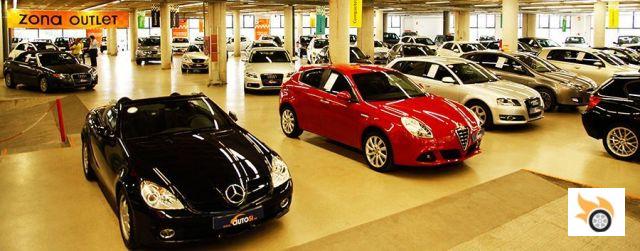
SEAT itself now speaks highly of its change of direction with a product more and better aimed "towards families" and abandoning its dynamic focus.
But fifteen years ago things were not like that. SEAT made cars for a different, younger age group and made money out of it. Have tastes changed or have buyers changed? A quick look at recent statistics reveals the reality behind the radical change in the range of cars we've seen over the last five years.
Pulling statistics, we have been able to know that the average age of the buyer of a new car in Europe is 53 years practically right now. In Spain the average age is 46, seven years younger than the European average. What's even more important is that only one in four European buyers are under 45, which moves the median (the most typical value) above the 45-year barrier.
Comparing historical data, the average age of buyers in Spain has risen by six years in the period 2007-2013. Why? Well, for many reasons, but among others, the massive unemployment in the country for people under 25, the decline in interest in buying new vehicles of the current twenty-somethings (another statistic reveals that one in two people under 25 are not interested in owning their own car in our country), and the extreme difficulty of access to credit, which still plagues us. And the fact is that the majority of new car purchases are made in cash, although it may seem strange (in fact, by looking at the data, we have found surveys and data for all tastes, with results that say that the majority of operations are financed, and other data that say just the opposite).
The second-hand market is the one that is responsible for nurturing cars to the youngest, but manufacturers do not design cars for the segment of the Used Vehicle (VO). Brands are interested in selling new cars, which is what they live and do business, fundamentally.
This being the case, the shift in the average and "fashionable" age of European buyers is having a huge effect on product design and layout. The disappearance of a large part of buyers under the age of thirty from the European market has meant that all manufacturers have made two fundamental decisions: to move B-segment products towards the size of the C-segment, seeking to offer "all-round" cars with four seats and a sizeable boot, and at the same time the C-segment has become "the family car par excellence" but without aesthetic requirements or dynamic risks.
The two brands that most "abused" the young driver's quest at the beginning of the century (probably Opel and SEAT) have had to change the configuration of their C-segment products (Astra and Leon) to create more familiar, less daring and aggressive cars that are no longer "so cool".
For SEAT this has been an important cultural change. To begin with, it has started from the need to get rid of its "hispanodependence" with the Leon. It could not concentrate almost all sales of the compact car in Spain, as that would leave it weakened. Targeting the rest of Europe has meant offering a car for people aged 45 and over, and that meant at the same time leaving behind the keys that had made the Leon such a success as a "sports compact". There is no longer any room for "tuner" body kits, but there is room for family bodies.
Fiat, for its part, has ended up killing the Punto, and especially its sporty version, the Abarth Punto, in another clear example of how the demand for a product that concentrated its sales in people under thirty years of age has come to an end. The 500 family and the Panda are products that "sell themselves" to the "forty-somethings".
But where will all this lead us? The timid recovery of the market will surely imply a gradual decrease in the average age of buyers. But it will be very slow and discreet. The lack of interest in buying a new car and the emigration of the population to mega-cities is causing the car to be seen as "something outdated from the past" (one in four people in Europe already think this way, according to the Cetelem study on car buying habits).
The emergence of automated driving, pods and Uber-type services for sharing individual means of transport will pose an even greater problem. The changing tastes of the young population will profoundly affect an industry that will have to reinvent itself to adapt to the existing market.
Then, those of us who have always complained about "how bland and bland the new compact is from brand equis", but the reality is that when you aim at a 45-50 year old man as the main customer for your product, and you follow the maxim of "never displease your target audience" (which is logical, by the way) there is little room for radical and daring licenses.
Data: Eurostat, Cetelem observatory, ACEA
























